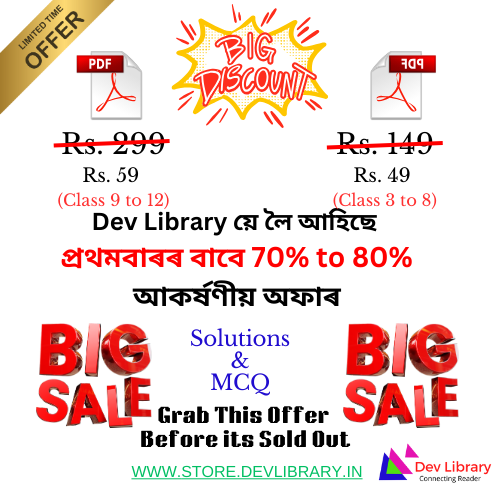Class 6 Science Chapter 4 Sorting of Materials Into Groups answer to each chapter is provided in the list so that you can easily browse throughout different chapter Assam Board As Per New Syllabus Class 6 Science Chapter 4 Sorting of Materials Into Groups and select needs one.
SEBA Class 6 Science Chapter 4 Sorting of Materials Into Groups
Also, you can read the SCERT book online in these sections Solutions by Expert Teachers as per SCERT (CBSE) Book guidelines. These solutions are part of SCERT All Subject Solutions. Here we have given Assam Class 6 Science Solutions for All Subject, You can practice these here.
Sorting of Materials Into Groups
Chapter: 4
| Exercise |
1. Name five objects which can be made from wood.
Ans: The five objects which can be made from wood are – chair, table, plough, bullock cart, bed.
2. Select those objects from the following which shine:
Glass bowl, plastic toy, steel spoon, cotton shirt
Ans: The shining objects are: Glass bowl and steel spoon.
3. Match the objects given below with the materials from which they could be made. Remember, an object could be made from more than one material and a given material could be used for making many objects.
| Objects | Material |
| Book | Glass |
| Tumbler | Wood |
| Chair | Paper |
| Toy | Leather |
| Shoes | Plastic |
Ans:
| Objects | Material |
| Book | Paper |
| Tumbler | Glass |
| Chair | Wood |
| Toy | Plastic |
| Shoes | Leather |
4. State whether the statements given below are True or False.
(i) Stone is transparent, white glass is opaque.
Ans: False.
(ii) A notebook has lustre while eraser does not.
Ans: False.
(iii) Chalk dissolves in water.
Ans: False.
(iv) A piece of wood floats on.
Ans: True.
(v) Sugar does not dissolve in water.
Ans: False.
(vi) Oil mixes with water.
Ans: False.
(vii) Sand settles down in water.
Ans: True.
(viii) Vinegar dissolves in water.
Ans: True.
5. Given below are the names of some objects and materials:
Water, basketball, orange, sugar, globe, apple and earthen pitcher Group them as:
(a) Round shape and other shapes.
(b) Eatables and non eatables.
Ans: (a) Round shape: Basketball, orange, globe, apple, earthen pitcher.
Other Shapes: Water, sugar.
(b) Eatables: Water, orange, sugar, apple.
Non eatables: Basketball, globe, earthen pitcher.
6. List all items known to you that float on water. Check and see if they will float on oil or kerosene.
Ans: List of some items that float on water:
(a) Paper.
(b) Wood.
(c) Ice.
(d) Oil.
(e) Thermocol.
(f) Thin plastic sheets.
(g) Wax.
List of some items that float on oil:
(a) Paper.
(b) Wood.
(c) Thin Plastic sheets.
(d) Thermocol.
(e) Wax.
List of some items that float on kerosene:
(a) Paper.
(b) Thermocol.
(c) Thin plastic sheets.
7. Find the odd one out from the following:
(a) Chair, bed, table, baby, cupboard.
(b) Rose, Jasmine, boat, marigold, lotus.
(c) Aluminum, iron, copper, silver, sand.
(d) Sugar, salt, sand, copper sulfate.
Ans: (a) Baby
(b) boat
(c) Sand
(d) Sand.

Hi, I’m Dev Kirtonia, Founder & CEO of Dev Library. A website that provides all SCERT, NCERT 3 to 12, and BA, B.com, B.Sc, and Computer Science with Post Graduate Notes & Suggestions, Novel, eBooks, Biography, Quotes, Study Materials, and more.




Thanks ??